The Science & Research Behind Treating Hair Loss with PRP (Platelet Rich Plasma)
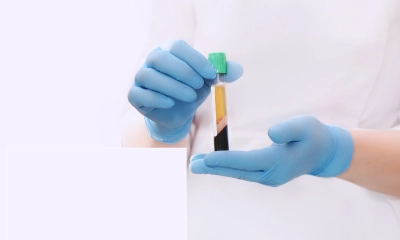
Platelet Rich Plasma (PRP) therapy has emerged as a promising solution for hair loss. Like any other new treatment or medical discovery, PRP has been subject to scientific scrutiny. The overwhelming consensus is that PRP does harness the regenerative power of growth factors to stimulate hair growth. In this post, we examine the academic research and specific studies that highlight the efficacy of PRP in regrowing hair.
Understanding Platelet Rich Plasma (PRP)
PRP therapy involves extracting platelets from the patient’s blood and reintroducing them into the scalp. These platelets are loaded with growth factors and other bioactive molecules that aid in tissue repair and regeneration. This has allowed countless patients affected by hair loss, to regrow hair.
Unveiling the Mechanism for Regrowing Hair
Studies, such as the one outlined by Dhurat R, et al, analyse the mechanisms PRP utilises to regrow hair. Consequently, PRP prolongs the growth phase of hair which boosts the survival of hair follicle cells. This triggers hair growth by stimulating specific cells in the scalp. In turn, this enables healthy cells to replace damaged cells that cause hair loss, hair thinning, or receding hairlines. These healthy cells promote hair regrowth and hair regeneration.
What Conditions do Scientists feel PRP can treat?
There are a variety of conditions that can cause hair loss, balding or thinning hair. Many of those affected to individuals seeks mechanisms for regrowing hair. A number of scientific studies have been conducted into the efficacy of PRP, and demonstrate its potential to cure several specific hair loss conditions including:
Androgenetic Alopecia
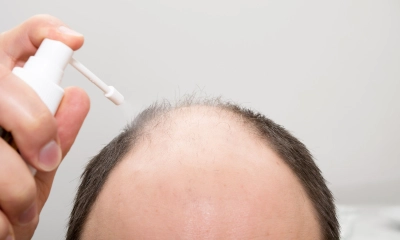
Androgenetic Alopecia affects up to 50 percent of both males and females. It is characterised by progressive loss of terminal hair of the scalp any time after puberty. Research, such as the meta-analysis by Gupta and Carviel in Dermatologic Surgery, has shown significant improvements in hair density and thickness in Androgenetic Alopecia patients after PRP treatment compared to control groups.
These results offer hope that PRP can represent a potential hair loss solution for Androgenetic Alopecia patients in achieving treatment for hair loss.
Female Pattern Hair Loss
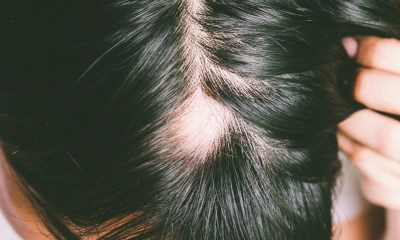
Female Pattern Hair Loss is characterised as a nonscarring diffuse alopecia that evolves from the progressive miniaturisation of hair follicles and subsequent reduction in hairs, especially in the central, frontal, and parietal scalp regions Olsen, 2002.
It can have a significant impact on the confidence and self-esteem of female hair loss patients, however PRP is shown to be an effective hair loss therapy in several case studies for ladies seeking options for hair growth.
Studies, including systematic reviews by Alves et al. and meta-analyses by Schiavone et al., have confirmed the effectiveness of PRP in enhancing hair thickness and density in women with Female Pattern Hair Loss.
Alopecia Areata
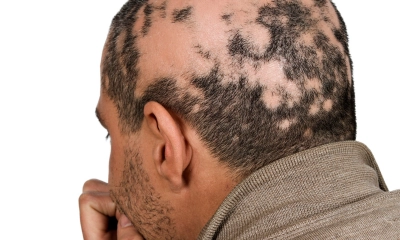
Alopecia Areata is a disease that happens when the immune system attacks hair follicles and causes hair loss. Patients with Alopecia Areata can be characterised as having total, or, partial hair loss, which until recently has been characterised as a condition that cannot be treated.
However, PRP has demonstrated extreme promise in treating Alopecia Areata, as evidenced by studies like the one by Trink et al.
In the American Journal of Clinical Dermatology, which showed significant hair regrowth in Alopecia Areata patients treated with PRP. PRP was found to offer a potent inflammatory effect on Alopecia Areata, which provides significant hope for Alopecia Areata patients that PRP may offer them a permanent solution to the problem of hair loss.
Hair Transplants
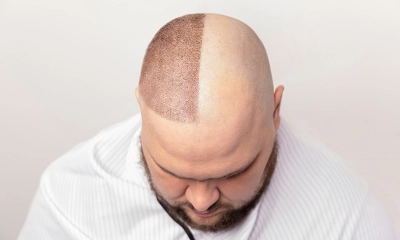
Hair transplants, while having some promise for those struggling with hair loss, are not a permanent solution to progressive hair loss conditions and diseases.
However, when used alongside hair transplants procedures, PRP has been shown to improve graft survival and promote faster hair growth. Studies by Garg et al. have reported positive outcomes in terms of hair density and thickness with PRP-assisted transplantation.
Therefore, patients that have received a hair transplant, are highly likely to enjoy markedly long-lasting results should they also consider utilisation of PRP.
Why Choose Re~Growth for PRP?
Re~Growth UK provides affordable, and discreet hair loss treatment utilising the power or PRP at our location at The Village Barbers, Allesley in Coventry. Every step of your hair regrowth journey with us will be smooth, welcoming, and enjoyable, as our PRP treatment helps you find an effective solution to your hair loss, whatever the cause.
Contact us using this link to organise a free, no obligations quotation. Our team of specialists will be on hand to give you all the support you need going forward.
Conclusion
In summary, PRP therapy offers hope for those seeking to combat hair loss. With its ability to extend the hair growth phase, stimulate tissue regeneration, and enhance hair transplant outcomes, PRP stands as a promising solution in the field of hair restoration. As research continues to evolve, PRP provides optimism for individuals looking to regain their hair and confidence.
References
Alves R, Grimalt R. Randomized Placebo-Controlled, Double-Blind, Half-Head Study to Assess the Efficacy of Platelet-Rich Plasma on the Treatment of Androgenetic Alopecia. Dermatol Surg. 2016 Apr;42(4):491-7. doi: 10.1097/DSS.0000000000000665. PMID: 27035501. Accessible here
https://pubmed.ncbi.nlm.nih.gov/27035501/
Dhurat R, Sukesh M. Principles and Methods of Preparation of Platelet-Rich Plasma: A Review and Author’s Perspective. J Cutan Aesthet Surg. 2014 Oct-Dec;7(4):189-97. doi: 10.4103/0974-2077.150734. PMID: 25722595; PMCID: PMC4338460. Accessible at https://www.ncbi.nlm.nih.gov/pmc/articles/PMC4338460/
Garg S. Outcome of Intra-operative Injected Platelet-rich Plasma Therapy During Follicular Unit Extraction Hair Transplant: A Prospective Randomised Study in Forty Patients. J Cutan Aesthet Surg. 2016 Jul-Sep;9(3):157-164. doi: 10.4103/0974-2077.191657. PMID: 27761085; PMCID: PMC5064679.
https://pubmed.ncbi.nlm.nih.gov/27761085/
Gupta AK, Carviel J. A Mechanistic Model of Platelet-Rich Plasma Treatment for Androgenetic Alopecia. Dermatol Surg. 2016 Dec;42(12):1335-1339. doi: 10.1097/DSS.0000000000000901. PMID: 27631460. Accessible at: https://pubmed.ncbi.nlm.nih.gov/27631460/
Schiavone G, Raskovic D, Greco J, Abeni D. Platelet-rich plasma for androgenetic alopecia: a pilot study. Dermatol Surg. 2014 Sep;40(9):1010-9. doi: 10.1097/01.DSS.0000452629.76339.2b. PMID: 25111436.
https://pubmed.ncbi.nlm.nih.gov/25111436/
Trink A, Sorbellini E, Bezzola P, Rodella L, Rezzani R, Ramot Y, Rinaldi F. A randomized, double-blind, placebo- and active-controlled, half-head study to evaluate the effects of platelet-rich plasma on alopecia areata. Br J Dermatol. 2013 Sep;169(3):690-4. doi: 10.1111/bjd.12397. PMID: 23607773. https://pubmed.ncbi.nlm.nih.gov/23607773/
